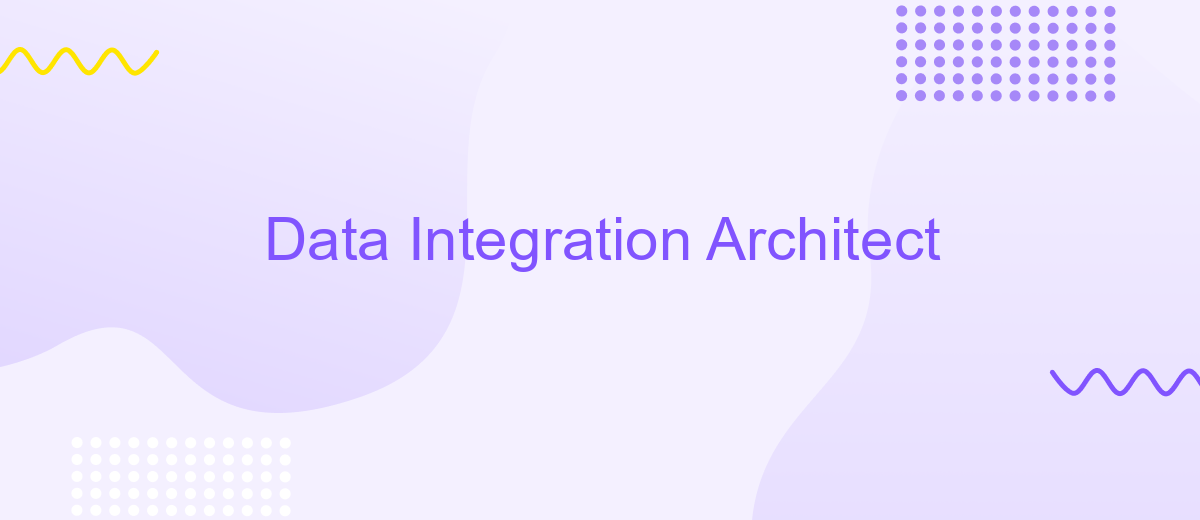Data Integration Architect
A Data Integration Architect plays a pivotal role in modern enterprises by seamlessly connecting disparate data sources to create a unified, accessible ecosystem. This professional ensures data consistency, quality, and accessibility, enabling informed decision-making and strategic planning. In this article, we will explore the key responsibilities, skills, and tools essential for a successful career as a Data Integration Architect.
Introduction
In today's fast-paced digital landscape, the role of a Data Integration Architect is becoming increasingly vital. This professional is responsible for designing and managing the seamless flow of data across various systems, ensuring that information is accessible, accurate, and secure. By leveraging advanced tools and methodologies, a Data Integration Architect helps organizations make data-driven decisions that drive business growth and efficiency.
- Design and implement data integration solutions
- Ensure data quality and consistency
- Manage data flow across multiple platforms
- Utilize tools like ApiX-Drive for efficient integration
- Collaborate with stakeholders to understand data needs
One of the key tools in a Data Integration Architect's arsenal is ApiX-Drive, a service that simplifies the process of connecting various applications and automating workflows. By using ApiX-Drive, architects can quickly set up integrations without extensive coding, allowing for more focus on strategic tasks. This results in a more agile and responsive data infrastructure, capable of adapting to the ever-changing demands of the business environment.
Role of a Data Integration Architect

A Data Integration Architect plays a crucial role in designing and implementing solutions that allow disparate data sources to communicate and work together effectively. They are responsible for creating the architecture that facilitates seamless data flow across various systems, ensuring data consistency, accuracy, and accessibility. This involves defining integration strategies, selecting appropriate tools and technologies, and establishing data governance policies. By leveraging their expertise, organizations can achieve efficient data consolidation, which is vital for informed decision-making and operational efficiency.
In addition to their technical skills, Data Integration Architects must also understand the business requirements to tailor solutions that align with organizational goals. They often utilize integration platforms like ApiX-Drive to streamline the process of connecting different applications and services. ApiX-Drive, for instance, offers a user-friendly interface and robust functionalities that simplify the setup and management of data integrations. This allows architects to focus on optimizing data workflows and ensuring high-quality data exchange, ultimately driving business innovation and growth.
Skills and Responsibilities

A Data Integration Architect plays a crucial role in ensuring seamless data flow across various systems within an organization. They are responsible for designing, implementing, and managing data integration solutions to meet business needs.
- Design and develop data integration solutions using tools like ApiX-Drive to automate workflows and streamline data processes.
- Ensure data accuracy and consistency across different platforms by implementing robust data validation and transformation rules.
- Collaborate with stakeholders to understand data requirements and provide technical guidance on integration best practices.
- Monitor and maintain data integration systems to ensure optimal performance and troubleshoot any issues that arise.
- Stay updated with the latest trends and technologies in data integration to continuously improve and innovate solutions.
In addition to technical skills, a Data Integration Architect must possess strong analytical abilities and excellent communication skills. They must work closely with various teams to ensure that data integration solutions align with business objectives and enhance overall efficiency.
Data Integration Architectures

Data integration architectures are essential for ensuring seamless data flow across various systems and applications within an organization. These architectures provide the framework for combining data from different sources into a unified view, enabling better decision-making and operational efficiency.
There are several types of data integration architectures, each suited to specific needs and scenarios. Some common architectures include ETL (Extract, Transform, Load), data virtualization, and data warehousing. Choosing the right architecture depends on factors such as data volume, complexity, and the specific requirements of the business.
- ETL (Extract, Transform, Load): This architecture involves extracting data from various sources, transforming it into a suitable format, and loading it into a target database or data warehouse.
- Data Virtualization: It provides a real-time, unified view of data from multiple sources without the need for physical data movement.
- Data Warehousing: Centralized storage of integrated data from various sources, optimized for query and analysis.
Tools like ApiX-Drive can simplify the integration process by automating data transfer between applications and services. By leveraging such tools, organizations can reduce manual effort, minimize errors, and ensure that data is always up-to-date and accessible for critical business processes.
Best Practices and Challenges
Implementing best practices in data integration involves a comprehensive understanding of the systems and data flows involved. One key practice is to ensure data consistency and accuracy through regular validation and cleansing processes. Utilizing automated tools like ApiX-Drive can significantly streamline this process by offering seamless integration between various platforms, ensuring data is synchronized in real-time. Additionally, maintaining detailed documentation and establishing robust error-handling procedures can prevent data discrepancies and facilitate smoother operations.
However, challenges in data integration are inevitable. One common issue is dealing with disparate data formats and sources, which can complicate the integration process. Security concerns also pose significant challenges, as ensuring data privacy and compliance with regulations like GDPR is critical. Furthermore, scalability issues can arise as the volume of data grows, necessitating scalable solutions and infrastructure. Leveraging services like ApiX-Drive can mitigate some of these challenges by providing scalable, secure, and user-friendly integration solutions.
FAQ
What is a Data Integration Architect responsible for?
What skills are essential for a Data Integration Architect?
How does a Data Integration Architect ensure data quality?
What are some common challenges faced by Data Integration Architects?
How can automation tools assist in data integration tasks?
Apix-Drive will help optimize business processes, save you from a lot of routine tasks and unnecessary costs for automation, attracting additional specialists. Try setting up a free test connection with ApiX-Drive and see for yourself. Now you have to think about where to invest the freed time and money!

